Abstract
Epidemiological aspects of infection with leptospires of the Ballum serogroup in black rats (Rattus rattus) and brown rats (Rattus norvegicus) are described. Rats inhabiting a variety of habitats were investigated and isolates identifed as belonging to the Ballum serogroup were obtained from 21 of 61 black rats (34%) and 63 of 243 brown rats (26%). The high level of endemic ballum serogroup infection in these species reported here has not been described in other countries. A statistical relationship was shown between the prevalence of infection in brown rat populations and population density but this was not evident for black rats. Epidemiological data indicates that the black rat is a maintenance host for leptospires of the Ballum serogroup in New Zealand. The brown rat does not appear to be an efficient maintenance host for these leptospires, however endemic infection can be maintained in high-density populations inhabiting synanthropic foci. An hypothesis of 'competitive exclusion' (preferential maintenance of a particular serovar by a host species) is introduced with regard to leptospiral infection in brown rats. It is concluded that the establishment and maintenance of an endemic focus of leptospirosis is dependant on: introduction of a particular serovar; a suitable host; and a suitable host habitat. Within a maintenance population direct transmission appears to be more important than indirect transmission via the environment.
Full text
PDF
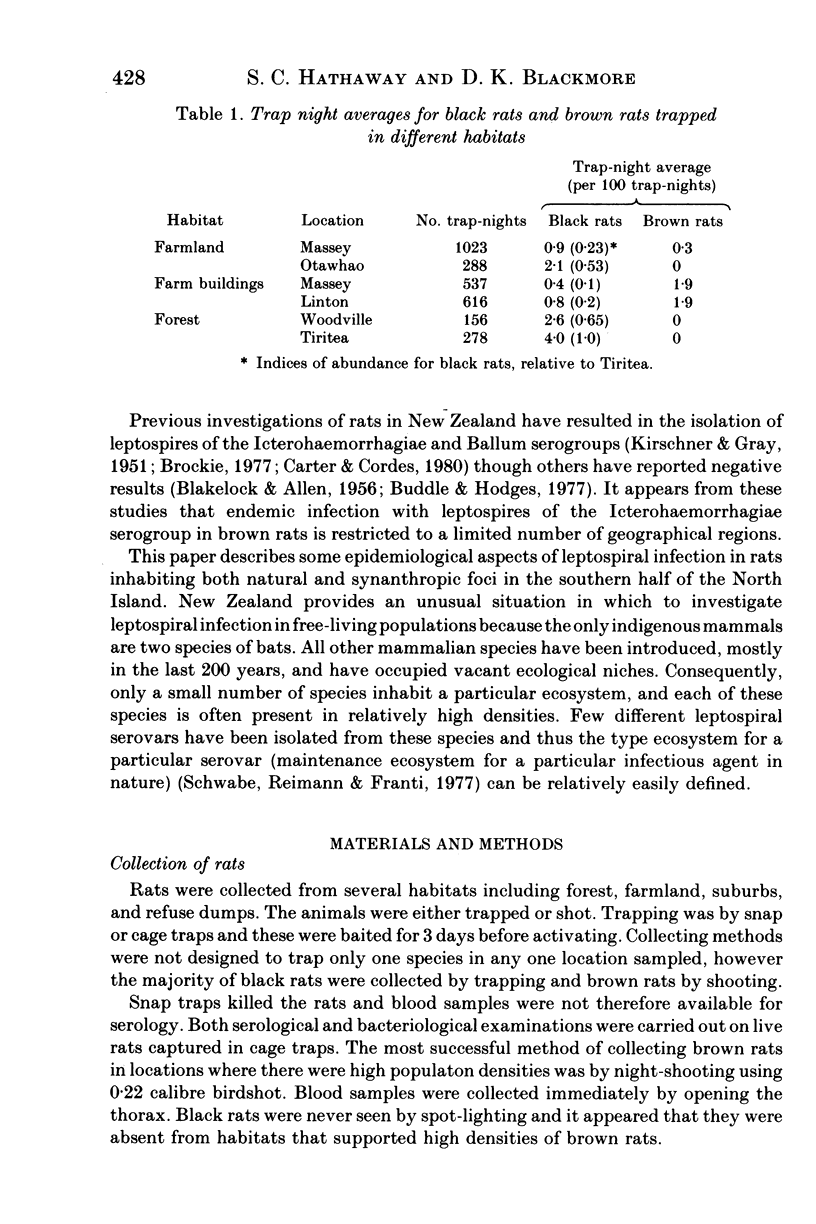
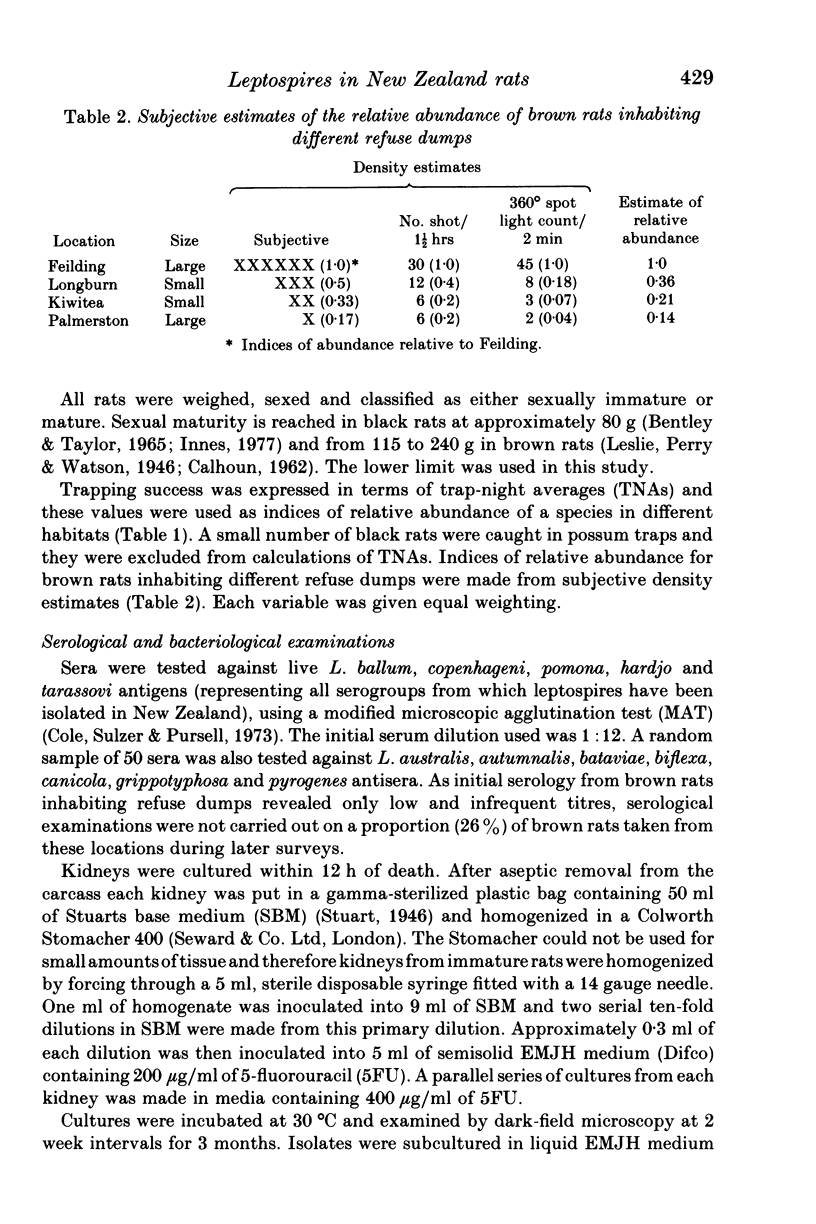

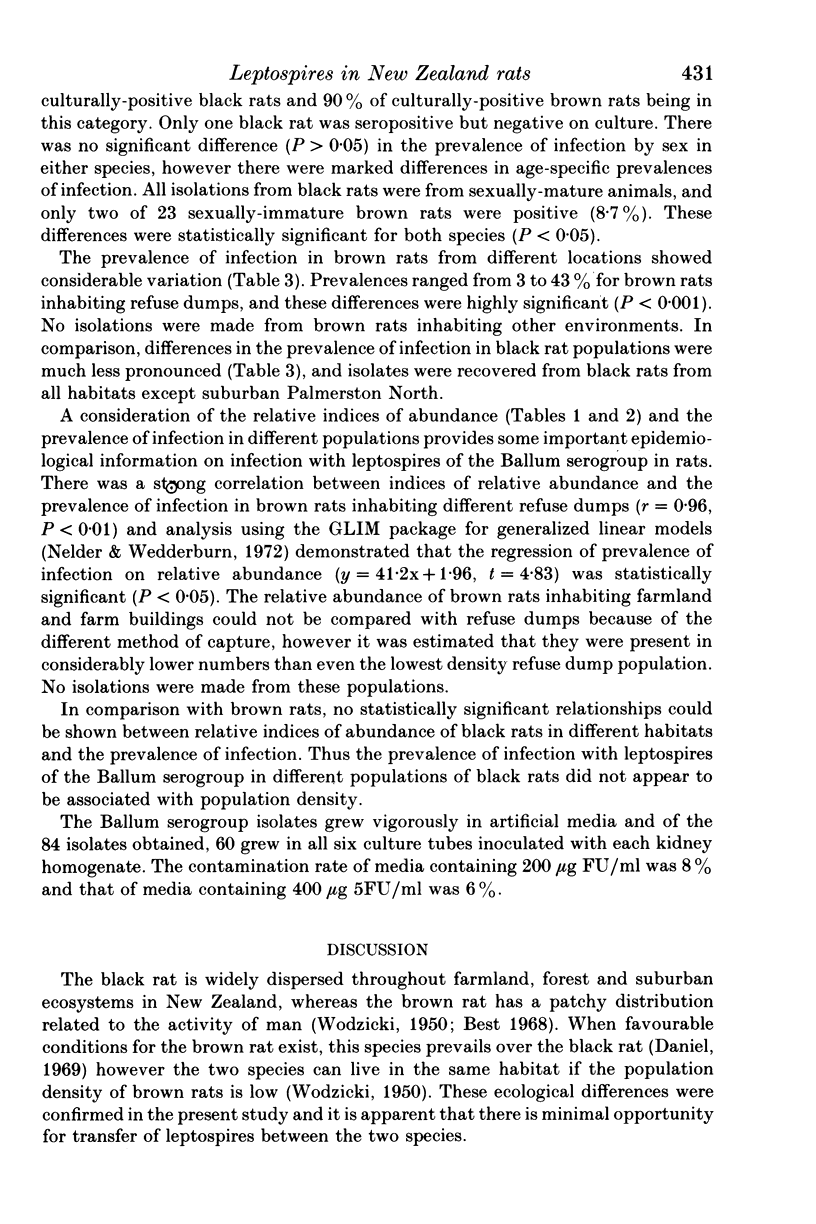

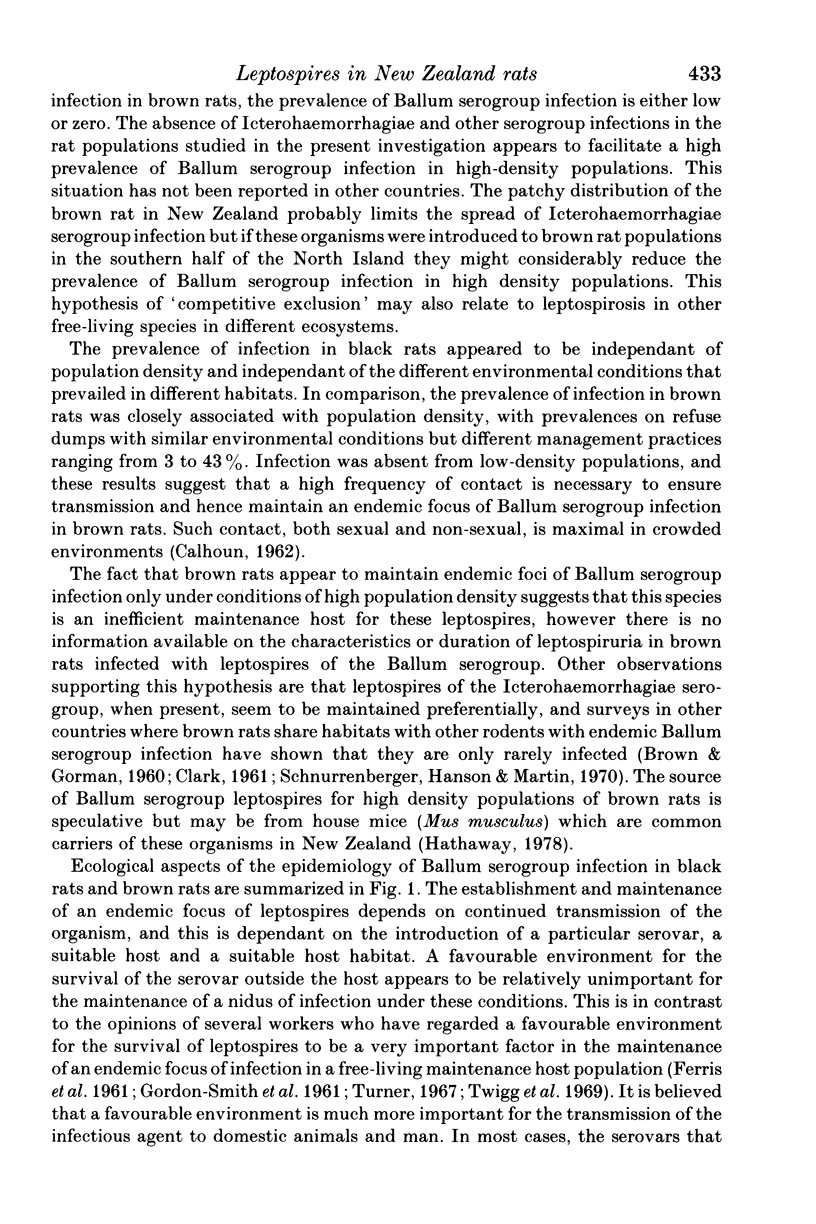
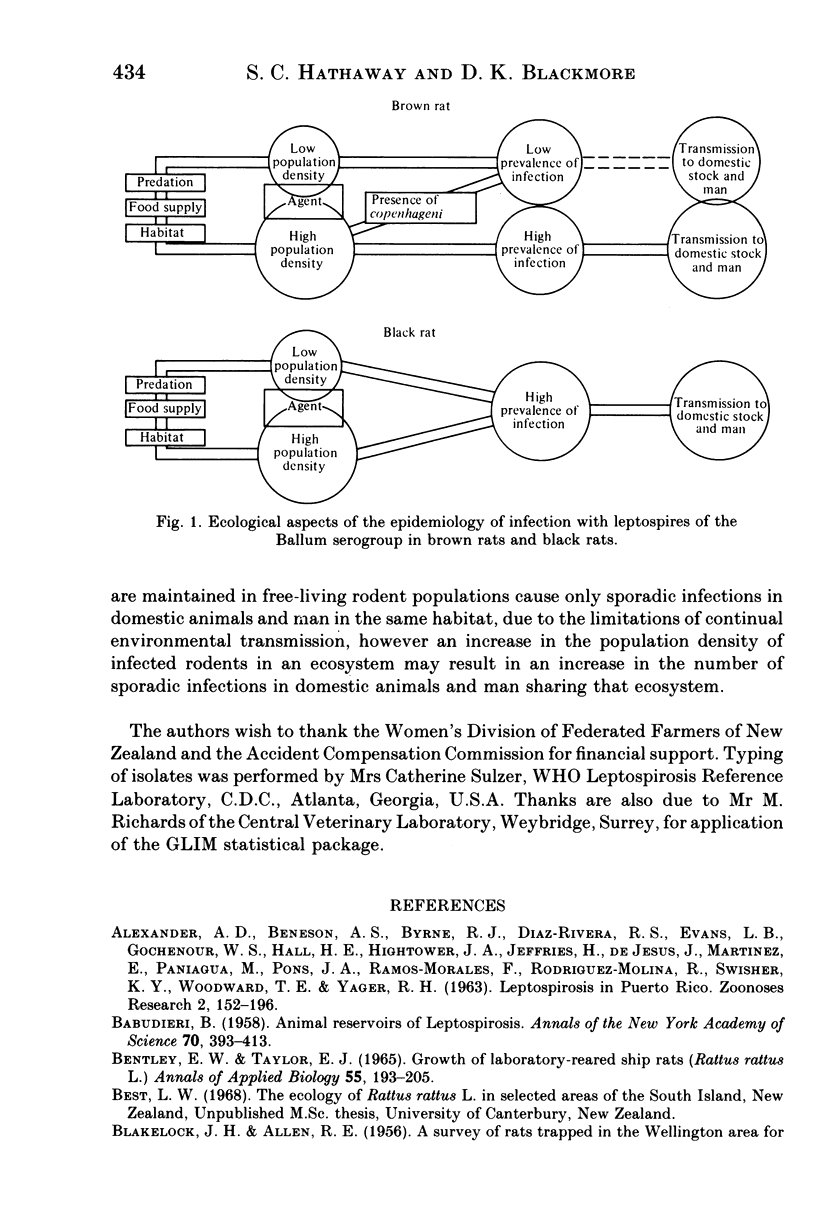
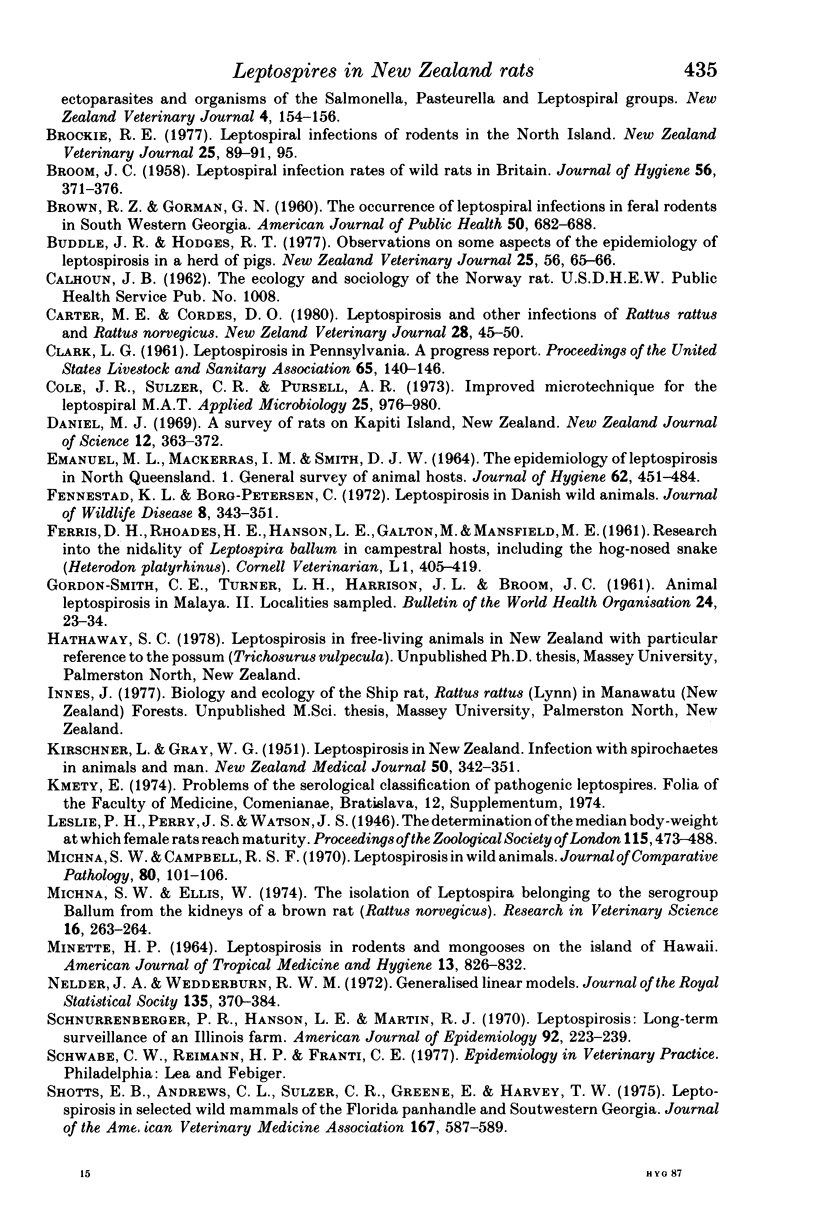
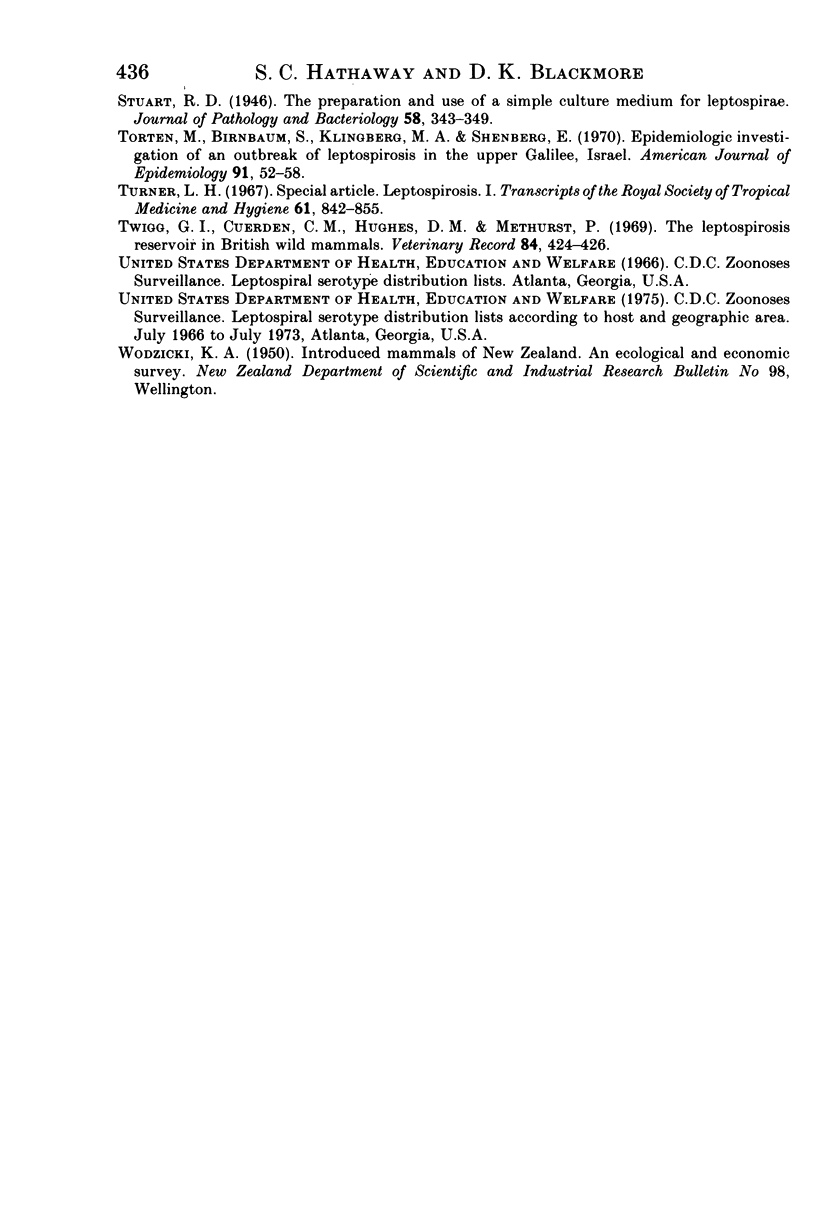
Selected References
These references are in PubMed. This may not be the complete list of references from this article.
- ALEXANDER A. D., BENENSON A. S., BYRNE R. J., DIAZ RIVERA R. S., EVANS L. B., GOCHENOUR W. S., HALL H. E., HIGHTOWER J. A., JEFFRIES H., DEJESUS J. LEPTOSPIROSIS IN PUERTO RICO. Zoonoses Res. 1963 Dec;2:152–227. [PubMed] [Google Scholar]
- BABUDIERI B. Animal reservoirs of leptospires. Ann N Y Acad Sci. 1958 Jun 3;70(3):393–413. doi: 10.1111/j.1749-6632.1958.tb35398.x. [DOI] [PubMed] [Google Scholar]
- BROOM J. C. Leptospiral infection rates of wild rats in Britain. J Hyg (Lond) 1958 Sep;56(3):371–376. doi: 10.1017/s0022172400037864. [DOI] [PMC free article] [PubMed] [Google Scholar]
- BROWN R. Z., GORMAN G. W. The occurrence of leptospiral infections in feral rodents in southwestern Georgia. Am J Public Health Nations Health. 1960 May;50:682–688. doi: 10.2105/ajph.50.5.682. [DOI] [PMC free article] [PubMed] [Google Scholar]
- Brockie R. E. Leptospiral infections of rodents in the North Island. N Z Vet J. 1977 Apr;25(4):89-90, 95-6. doi: 10.1080/00480169.1977.34369. [DOI] [PubMed] [Google Scholar]
- Buddle J. R., Hodges R. T. Observations on some aspects of the epidemiology of leptospirosis in a herd of pigs. N Z Vet J. 1977 Mar;25(3):56, 65-6. doi: 10.1080/00480169.1977.34359. [DOI] [PubMed] [Google Scholar]
- Carter M. E., Cordes D. O. Leptospirosis and other infections of Battus rattus and Rattus norvegicus. N Z Vet J. 1980 Mar;28(3):45–50. doi: 10.1080/00480169.1980.34688. [DOI] [PubMed] [Google Scholar]
- Cole J. R., Jr, Sulzer C. R., Pursell A. R. Improved microtechnique for the leptospiral microscopic agglutination test. Appl Microbiol. 1973 Jun;25(6):976–980. doi: 10.1128/am.25.6.976-980.1973. [DOI] [PMC free article] [PubMed] [Google Scholar]
- EMANUEL M. L., MACKERRAS I. M., SMITH D. J. THE EPIDEMIOLOGY OF LEPTOSPIROSIS IN NORTH QUEENSLAND. I. GENERAL SURGERY OF ANIMAL HOSTS. J Hyg (Lond) 1964 Dec;62:451–484. doi: 10.1017/s0022172400040195. [DOI] [PMC free article] [PubMed] [Google Scholar]
- FERRIS D. H., RHOADES H. E., HANSON L. E., GALTON M., MANSFIELD M. E. Research into the nidality of Leptospira ballum in campestral hosts including the hog-nosed snake (Heterodon platyrhinus). Cornell Vet. 1961 Jul;51:405–419. [PubMed] [Google Scholar]
- Fennestad K. L., Borg-Petersen C. Leptospirosis in Danish wild mammals. J Wildl Dis. 1972 Oct;8(4):343–351. doi: 10.7589/0090-3558-8.4.343. [DOI] [PubMed] [Google Scholar]
- KIRSCHNER L., GRAY W. G. Leptospirosis in New Zealand; infection with spirochaetes in animals and man. N Z Med J. 1951 Aug;50(278):342–351. [PubMed] [Google Scholar]
- MINETTE H. P. LEPTOSPIROSIS IN RODENTS AND MONGOOSES ON THE ISLAND OF HAWAII. Am J Trop Med Hyg. 1964 Nov;13:826–832. doi: 10.4269/ajtmh.1964.13.826. [DOI] [PubMed] [Google Scholar]
- Michna S. W., Campbell R. S. Leptospirosis in wild animals. J Comp Pathol. 1970 Jan;80(1):101–106. doi: 10.1016/0021-9975(70)90036-8. [DOI] [PubMed] [Google Scholar]
- Michna S. W., Ellis W. The isolation of Leptospira belonging to the serogroup ballum from the kidneys of a brown rat (Rattus norvegicus). Res Vet Sci. 1974 Mar;16(2):263–264. [PubMed] [Google Scholar]
- Schnurrenberger P. R., Hanson L. E., Martin R. J. Leptospirosis: long-term surveillance on an Illinois farm. Am J Epidemiol. 1970 Oct;92(4):223–239. doi: 10.1093/oxfordjournals.aje.a121202. [DOI] [PubMed] [Google Scholar]
- Shotts E. B., Jr, Andrews C. L., Harvey T. W. Leptospirosis in selected wild mammals of the Florida panhandle and southwestern Georgia. J Am Vet Med Assoc. 1975 Oct 1;167(7):587–589. [PubMed] [Google Scholar]
- Torten M., Birnbaum S., Klingberg M. A., Shenberg E. Epidemiologic investigation of an outbreak of leptospirosis in the Upper Galilee, Israel. Am J Epidemiol. 1970 Jan;91(1):52–58. doi: 10.1093/oxfordjournals.aje.a121112. [DOI] [PubMed] [Google Scholar]
- Turner L. H. Leptospirosis. I. Trans R Soc Trop Med Hyg. 1967;61(6):842–855. doi: 10.1016/0035-9203(67)90045-4. [DOI] [PubMed] [Google Scholar]
- Twigg G. I., Cuerden C. M., Hughes D. M., Medhurst P. The leptospirosis reservoir in British wild mammals. Vet Rec. 1969 Apr 26;84(17):424–426. doi: 10.1136/vr.84.17.424. [DOI] [PubMed] [Google Scholar]


